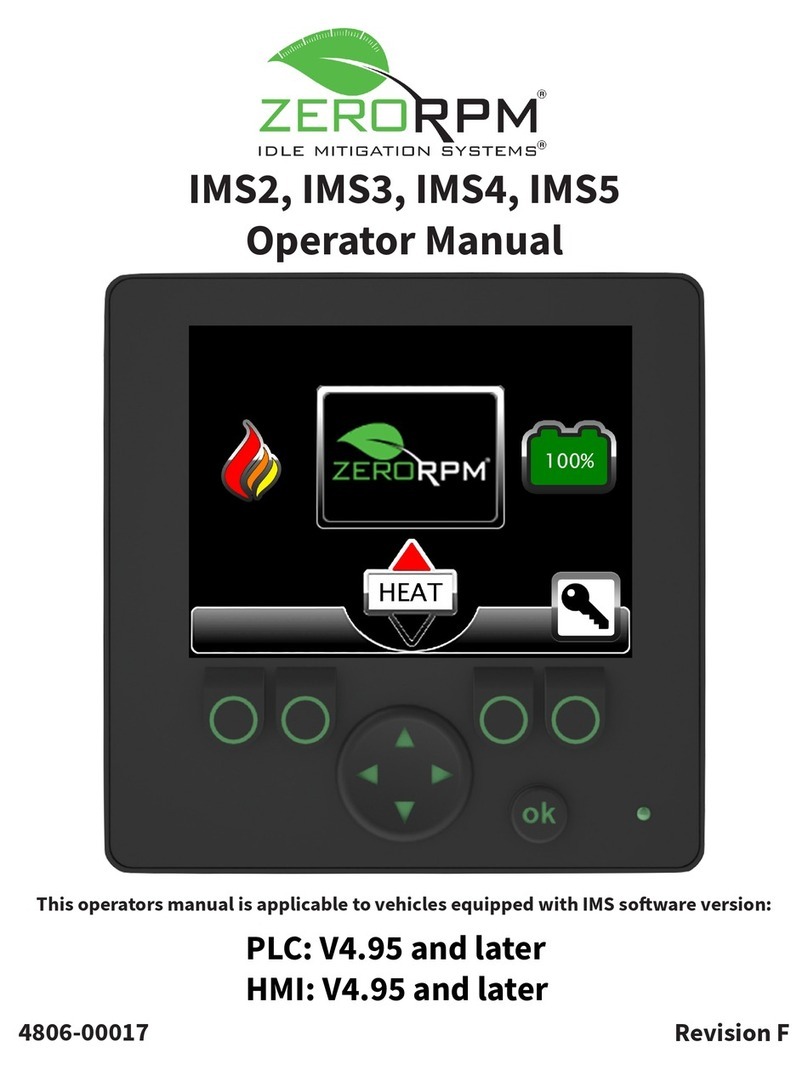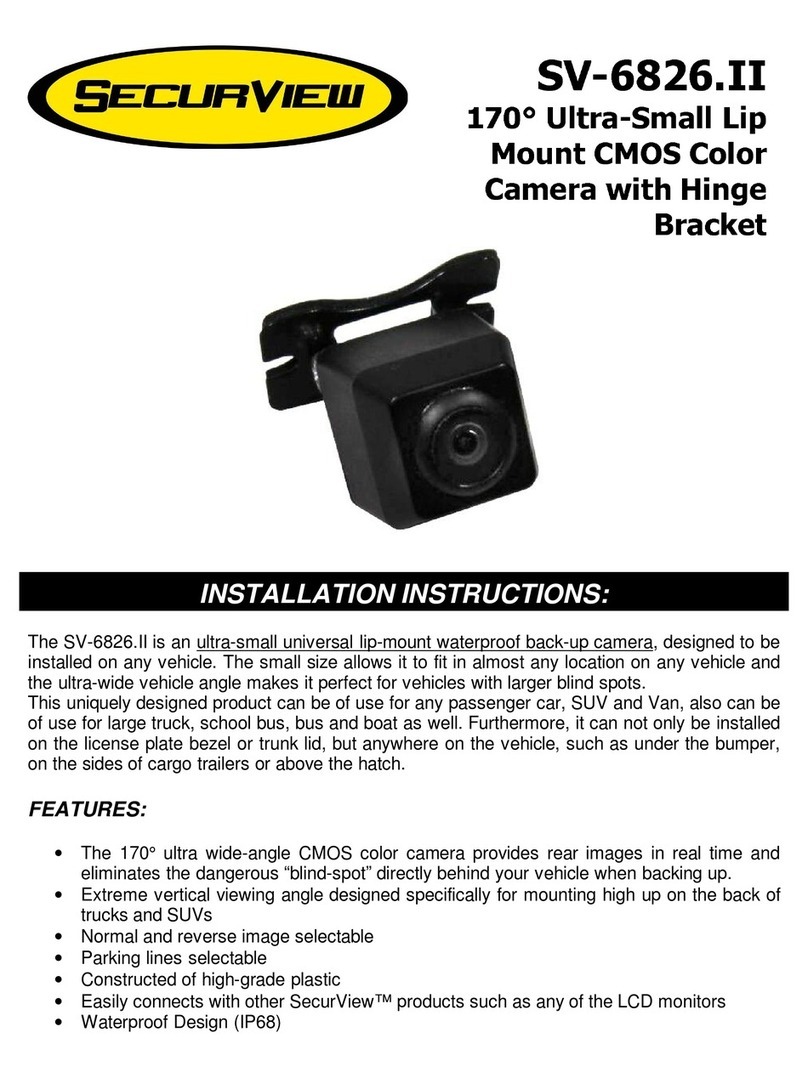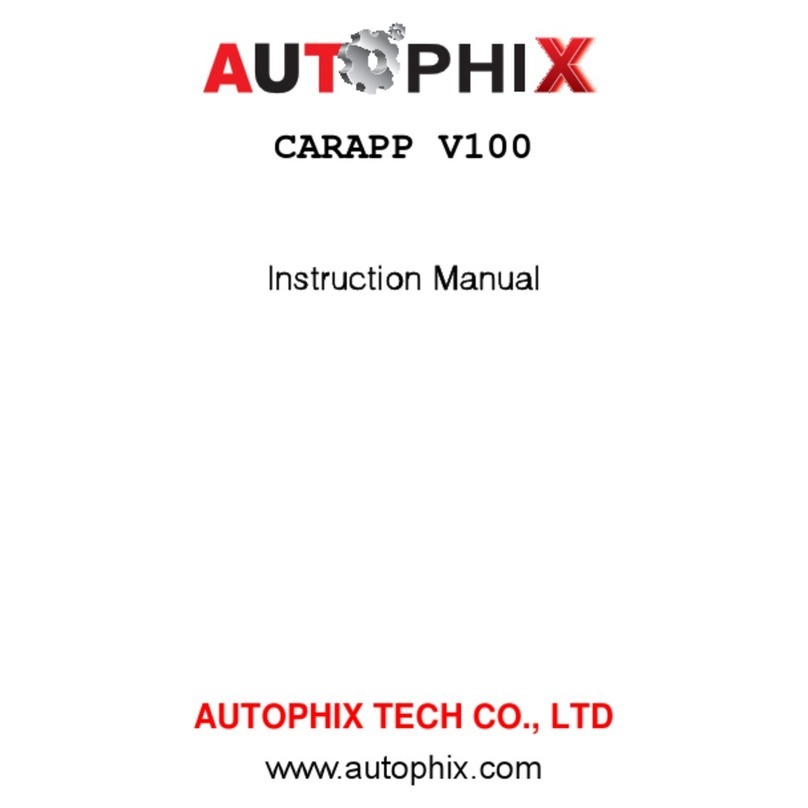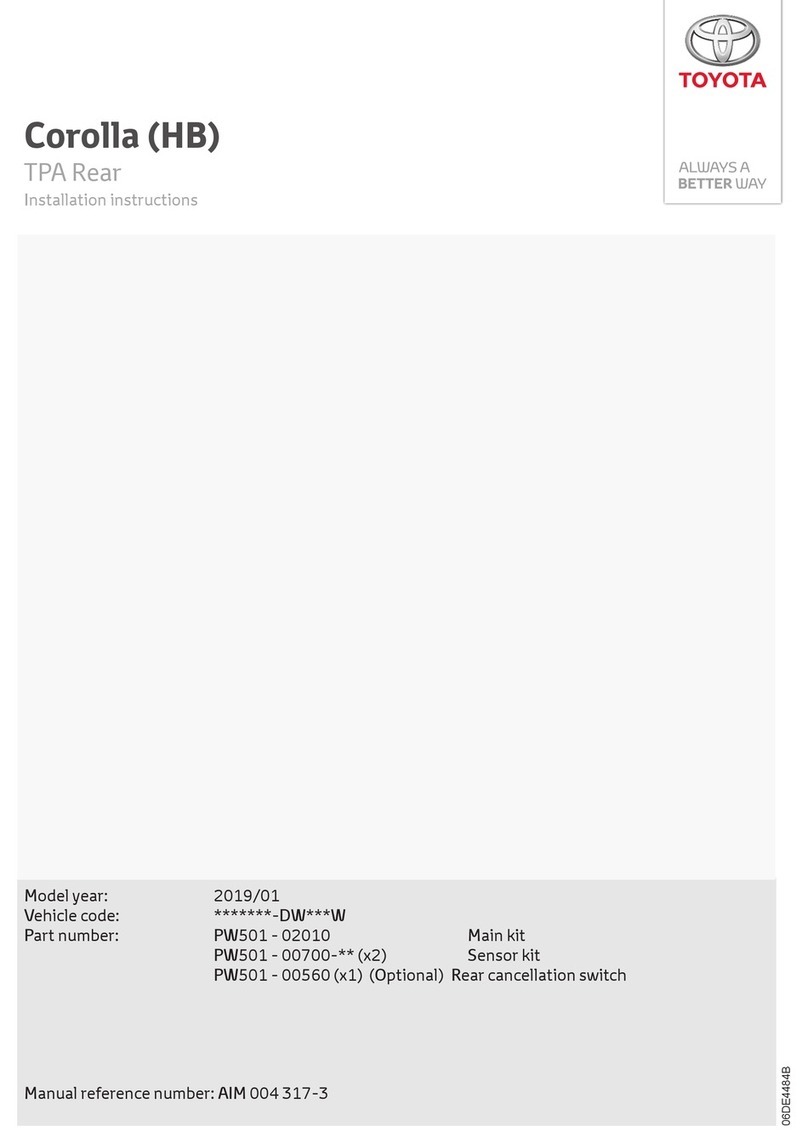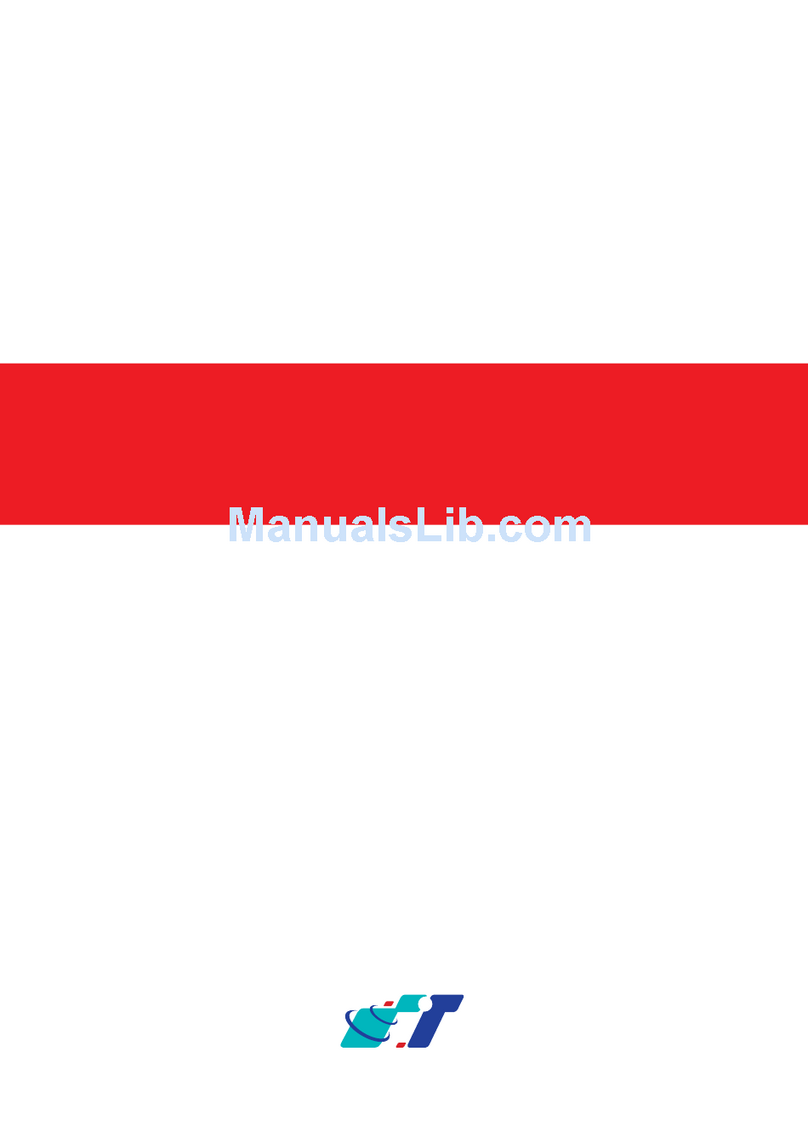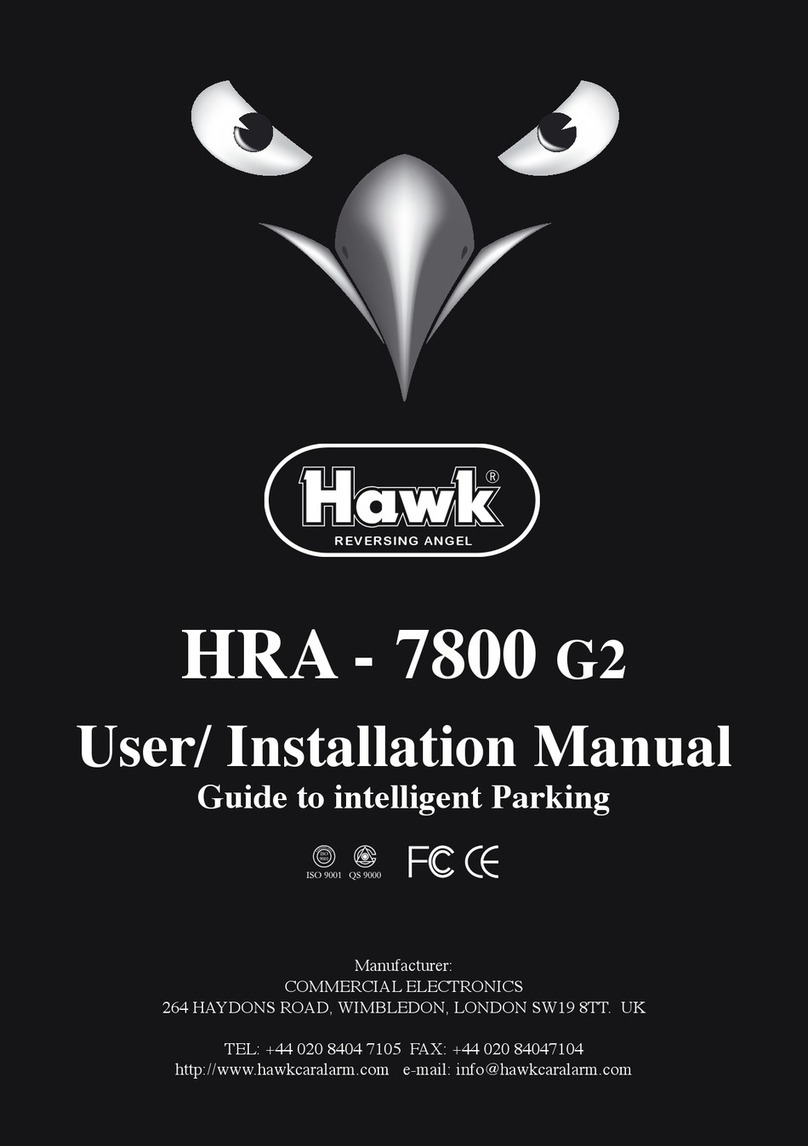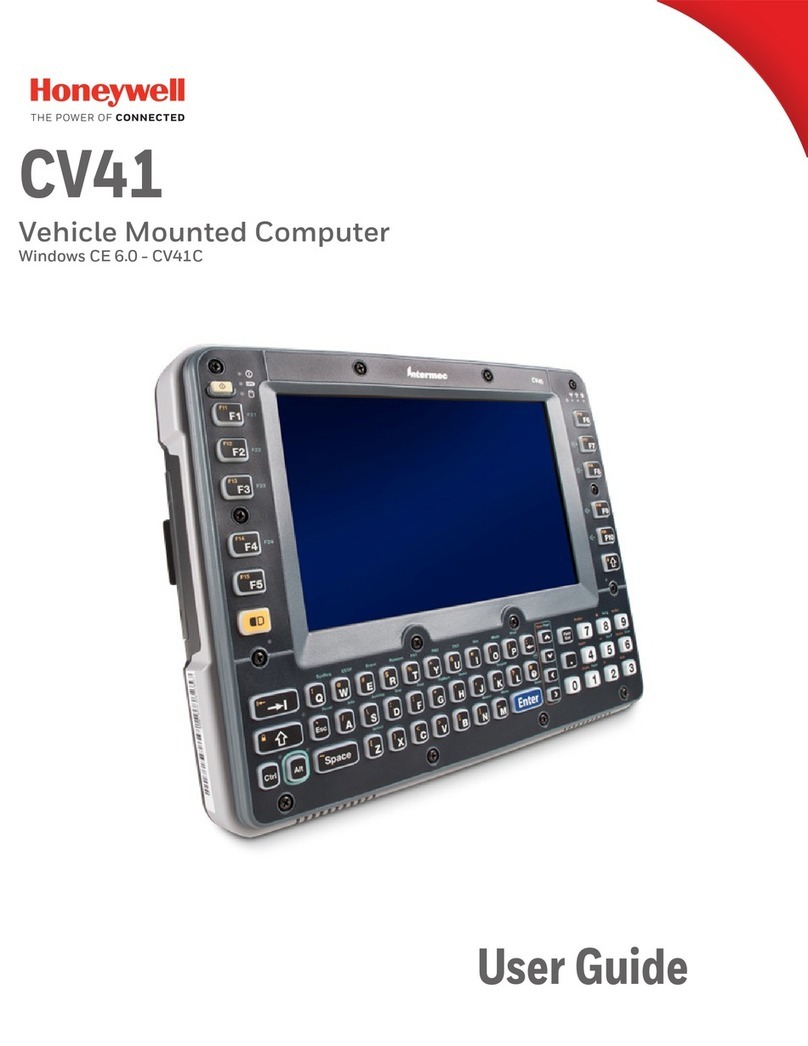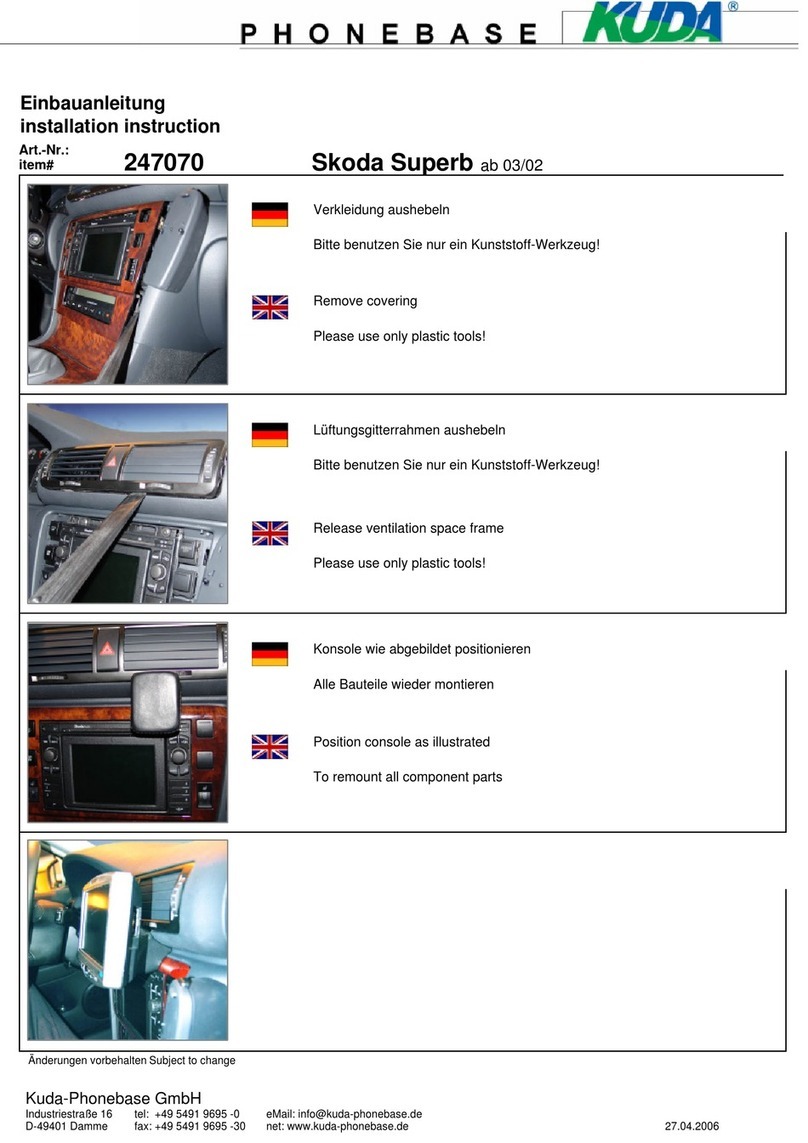AESYS Standard Sign System User manual

Standard Sign System
Maintenance Manual
Publication Number ASMM2010 • Version 1.0 • April 2011

aesys
Standard Sign System
Maintenance Manual
ASMM2010
Page 2
Version 1.0 • April 2011
© 2011 Aesys, Inc. —All Rights Reserved.
The copyright laws of the United States and other countries specifically protect this material in its entirety.
It may not be reproduced, distributed, or altered in any way without the expressed written consent of
Aesys, Inc.
Under copyright laws, neither the documentation, nor any associated software may be copied, photo-
copied, reproduced, translated, or reduced to any electronic medium of machine readable form, in whole
or in part, without the written consent of Aesys, Inc.
Notice
Every effort was made to ensure that the information in this document was accurate at the time of
printing. However, all information is subject to change without notice.
Mandatory Customer Information Federal Communications Commission (FCC) Statement
NOTE: This equipment has been tested and found to comply with the limits for a Class A digital device,
pursuant to Part 15 (and Parts 25 and 90) of the FCC rules. These limits are designed to provide
reasonable protection against harmful interference when equipment is operated in a commercial
environment. This equipment generates, uses, and can radiate radio frequency energy; and, if not
installed and used in accordance with this and related manuals, may cause interference to radio
communications. Operation of this equipment in a residential area may cause harmful interference in
which case the user will be required to correct the interference at their expense.
Trademark Information
Aesys™ is a registered trademark of Aesys, Inc.
INFOLED™ is a pending trademark of Aesys, Inc. (U.S. Trademark Application Serial No. 77520984)
GET ON BOARD WITH AESYS™ is a pending trademark of Aesys, Inc. (U.S. Trademark Application
Serial No. 77582662)
Aesys Contact Information
To contact us, please refer to the information below:
Corporate Headquarters —U.S.A.
225 County Road
Tenafly, NJ 07670-1818
Telephone: 201-871-3223
Facsimile: 201-871-3239
Corporate Headquarters —Canada
420 Main Street East, Suite 606
Milton, Ontario L9T 5G3
Telephone: 647-722-3241
Facsimile: 647-722-3242
General Information and Sales Department
Sales email: sales@aesysinc.com
Service email: service@aesysinc.com
Visit us on the Internet
www.aesysinc.com
Ordering Information
The ordering number for this publication is ASMM2010 • Version 1.0. To order this document, contact
Aesys U.S.A. or Aesys Canada.
IMPORTANT: If you are in possession of a printed or electronic version of this manual, be
aware that it may not be the current version. To ensure that you are using the most up-to-
date version of this manual, please contact Aesys, Inc.

aesys
Standard Sign System
Maintenance Manual
ASMM2010
Page 3
Version 1.0 • April 2011
Table of Contents
Chapter 1 —Preface and Overview .......................................................................................................... 9
....About This Maintenance Manual/Purpose.......................................................................................9
....Disclaimer ........................................................................................................................................9
....OSHA Compliance and Safety Guidelines.......................................................................................9
....Revision Information (English Version)..........................................................................................10
....Cautionary Symbols.......................................................................................................................10
Cautionary and Symbol Terminology ......................................................................................11
....Safety Summary and Cautions Concerning Servicing the Unit .....................................................11
Maintenance Related Guidelines ............................................................................................12
....Firmware and Manual Versions and Revisions .............................................................................12
Firmware Versions...................................................................................................................12
Current Firmware Releases.....................................................................................................12
Manual Versions......................................................................................................................13
Firmware and Manual Versions and Revisions.......................................................................13
....Change Management.....................................................................................................................13
....Aesys Terminology and Terms ......................................................................................................14
Chapter 2 —System Overview................................................................................................................15
....Introduction to the Standard Sign System .....................................................................................15
Chapter 3 —KC640 CCU Operation........................................................................................................16
....Introduction ....................................................................................................................................16
....KC640 Central Control Unit (CCU) Features.................................................................................17
....Start-Up/Power On Self Test (POST)............................................................................................18
....SmartMedia Card (SMC) Installation .............................................................................................19
....Selecting and Executing Destination/Message to Sign .................................................................20
....CCU Transmission/Communication Error (Status 2).....................................................................21
―Status 2‖ Error Troubleshooting Guide ..................................................................................21
....CCU LCD/Message Display...........................................................................................................22
....Dash/Run Number Sign Option .....................................................................................................22
....Selecting a Public Relations (P/R) Message .................................................................................22
....Deleting a Public Relations (P/R) Message...................................................................................23
Non-existent Code...................................................................................................................23
....Select Between Two Destinations (―DEST A‖ and ―DEST B)‖ .......................................................23
....Using the Scrolling Keys (<F7> and <F8>)....................................................................................24

aesys
Standard Sign System
Maintenance Manual
ASMM2010
Page 4
Version 1.0 • April 2011
....Blanking/Disabling the Sign ...........................................................................................................24
....Second Level Key Mode................................................................................................................24
Sign Brightness Adjustment Feature (<F1>)...........................................................................25
Enabling/Disabling the Internal Sign (<F2>)............................................................................26
Change Page Duration of P/R Message (<F3>) .....................................................................26
Line + Terminus Mode (<F4>).................................................................................................27
Ignition/Engine Off —Disabling the Display Feature (<F5>) ..................................................27
Dash Sign Enabled and Disabled Feature (<F6>) ..................................................................28
Protocol (Decimal/Hexadecimal) Setup Feature (<F7>) .........................................................28
Access Code Password Option (<F8>)...................................................................................28
....Reset Default Settings ...................................................................................................................29
....Alarm Reset/Disable ......................................................................................................................29
....Emergency Button Error.................................................................................................................29
....Emergency/Panic Alarm Feature...................................................................................................30
....Manual Input Messages (MIM) ......................................................................................................31
Manual Input Message (MIM) Procedure................................................................................31
Special MIM Feature Key Functions .......................................................................................31
....CCU Technical Information Supplement........................................................................................31
Viewing Other Destination Message Timeout.........................................................................31
Access Code/Password Recovery ..........................................................................................31
Downloading Data (Destination/Message Listing)...................................................................32
Uploading Firmware ................................................................................................................32
CCU Basic Operation-related Information...............................................................................32
Additional Software Considerations ........................................................................................33
CCU Hardware-related Information.........................................................................................34
Technical Characteristics ........................................................................................................35
Chapter 4 —Display Panels (Signs) .......................................................................................................36
....Introduction ....................................................................................................................................36
....Sign Components...........................................................................................................................38
Sign CPU Circuit Board...........................................................................................................39
Microprocessor..................................................................................................................39
EPROM Memory...............................................................................................................39
DIP SWITCH.....................................................................................................................40
PLD (Programmable Logic Device) ..................................................................................42
Internal Power Supply.......................................................................................................42

aesys
Standard Sign System
Maintenance Manual
ASMM2010
Page 5
Version 1.0 • April 2011
Interface Circuits to the CCU ............................................................................................42
CCU Filters........................................................................................................................42
Power Supply Circuit Board.....................................................................................................42
Transient Suppressor ..............................................................................................................44
Color Management Circuit Board (0305).................................................................................45
LED Circuit Boards..................................................................................................................45
....Sign Access ...................................................................................................................................47
Chapter 5 —Software Considerations ...................................................................................................48
....Overview ........................................................................................................................................48
Software for the KC640 CCU ..................................................................................................48
Software for the Signs (Via Processor Circuit Board) .............................................................48
Chapter 6 —Troubleshooting and Repair..............................................................................................49
....Introduction ....................................................................................................................................49
Chapter 7 —Spare Parts/ Electrical Information...................................................................................52
....Sign Parts Catalog Overview.........................................................................................................52
....Electrical/Cable Harness Information Overview ............................................................................52
....Sign Mounting Brackets Identification............................................................................................52
....Printed Circuit Boards....................................................................................................................52
....Destination Sign Parts Catalog Listings.........................................................................................53
List of Figures
Figure 1 —Manual Version Information .....................................................................................................13
Figure 2 —Standard Sign System General System Diagram....................................................................15
Figure 3 —KC640 Central Control Unit......................................................................................................16
Figure 4 —KC640 Central Control Unit, Selected Features I ....................................................................17
Figure 5 —Start-Up and Boot Program Code............................................................................................18
Figure 6 —Aesys Logo Briefly Appears.....................................................................................................18
Figure 7 —Firmware Revision Number......................................................................................................18
Figure 8 —KC640 SmartMedia Card and slot connector ..........................................................................19
Figure 9 —KC640 Central Control Unit, Selected Features II...................................................................20
Figure 10 —Transmission Message ..........................................................................................................20
Figure 11 —Error on the Letters A and C ..................................................................................................21
Figure 12 —Error with the Letter B............................................................................................................21

aesys
Standard Sign System
Maintenance Manual
ASMM2010
Page 6
Version 1.0 • April 2011
Figure 13 —Sample Code Number and Destination Message..................................................................22
Figure 14 —Public Relations (P/R) Code Number on the LCD .................................................................22
Figure 15 —Non-existent Code Message..................................................................................................23
Figure 16 —Select Destination ―A‖ ............................................................................................................23
Figure 17 —Select Destination ―B‖ ............................................................................................................23
Figure 18 —Disable Displays Prompt........................................................................................................24
Figure 19 —Disabled Display Confirmation...............................................................................................24
Figure 20 —Second Level Access Code Screen.......................................................................................24
Figure 21 —Second Level Key Mode Screen............................................................................................25
Figure 22 —Display Selection Screen .......................................................................................................25
Figure 23 —Sign Selection Screen............................................................................................................25
Figure 24 —Enabling the Internal Sign......................................................................................................26
Figure 25 —Public Relations (P/R) Message Page Duration Screen........................................................26
Figure 26 —Public Relations (P/R) Message Page Duration Set-up Completed......................................27
Figure 27 —Line + Terminus Mode (<F4>) Main Screen..........................................................................27
Figure 28 —Disabling Displays Screen .....................................................................................................27
Figure 29 —Dash Sign Enabled and Disabled Feature Main Screen .......................................................28
Figure 30 —Protocol (Decimal/Hexadecimal) Setup Feature Main Screen ..............................................28
Figure 31 —Access Code Password Option Initial Screen........................................................................28
Figure 32 —Access Code Password Change Password Screen ..............................................................29
Figure 33 —Access Code Password Option Change Confirmation Screen..............................................29
Figure 34 —Emergency Button Error Display............................................................................................30
Figure 35 —Emergency/Panic Alarm Connector.......................................................................................30
Figure 36 —KC640 CPU Board (Part Number 0404B, Front View) ..........................................................34
Figure 37 —KC640 CPU Board (Part Number 0404B, Rear View)...........................................................34
Figure 38 —Opaque Sign Louvers ............................................................................................................36
Figure 39 —Sign Bracket Mounting Holes.................................................................................................37
Figure 40 —Standard Sign System General System Diagram..................................................................37
Figure 41 —Mounting Nuts........................................................................................................................38
Figure 42 —Sign CPU Circuit Board..........................................................................................................39
Figure 43 —DIP Switch (Detail).................................................................................................................40
Figure 44 —Power Supply Circuit Board (Viewed from Front)..................................................................43
Figure 45 —Transient Suppressor Circuit Board (Viewed from Right Side)..............................................44
Figure 46 —Color Management Circuit Board...........................................................................................45
Figure 47 —LED Circuit Boards (Interior View).........................................................................................45

aesys
Standard Sign System
Maintenance Manual
ASMM2010
Page 7
Version 1.0 • April 2011
Figure 48 —Accessing HG 320.200X24/1 YW Slim 2-type Front Sign Components................................47
Figure 49 —Accessing Slim-type Sign Components.................................................................................47
Figure 50 —Sign Electrical/Cable Harness Interconnection Block Diagram .............................................54
Figure 51 —Electrical Schematic Electrical Connections, Full View .........................................................55
Figure 52 —Electrical Schematic Electrical Connections, Detail ―A‖ .........................................................56
Figure 53 —Electrical Schematic Electrical Connections, Detail ―B‖ .........................................................57
Figure 54 —Electrical Schematic Electrical Connections, Detail ―C‖.........................................................58
Figure 55 —Electrical Schematic Electrical Connections, Detail ―D‖.........................................................59
Figure 56 —General Connection Diagram, Full View................................................................................60
Figure 57 —General Connection Diagram, Detail ―A‖ ...............................................................................61
Figure 58 —General Connection Diagram, Detail ―B‖ ...............................................................................62
Figure 59 —General Connection Diagram, Detail ―C‖ ...............................................................................63
Figure 60 —General Connection Diagram, Detail ―D‖ ...............................................................................64
Figure 61 —General Connection Diagram, Detail ―E‖ ...............................................................................65
Figure 62 —General Connection Diagram, Detail ―F‖................................................................................66
Figure 63 —Standard Junction Box, Full View ..........................................................................................67
Figure 64 —Standard Junction Box, Detail ―A‖ ..........................................................................................68
Figure 65 —Standard Junction Box, Detail ―B‖ ..........................................................................................69
Figure 66 —Standard Junction Box, Detail ―C‖..........................................................................................70
Figure 67 —Standard Junction Box, Detail ―D‖..........................................................................................71
Figure 68 —Main Power Cable..................................................................................................................72
Figure 69 —F02 Front Sign Extension Cable............................................................................................73
Figure 70 —Front Sign...............................................................................................................................74
Figure 71 —S02 Side Sign and Rear Sign Extension Cable.....................................................................75
Figure 72 —Side Sign................................................................................................................................76
Figure 73 —Rear Sign ...............................................................................................................................77
Figure 74 —C01 KC640 Data and Power Cable .......................................................................................78
Figure 75 —Alarm Cable Hook-up Wire ....................................................................................................79
Figure 76 —Adaptor DB9 Male/Female.....................................................................................................80
List of Tables
Table A —Manual Revision Information (English Version)........................................................................10
Table B —Manual and Equipment Safety Symbols...................................................................................10
Table C —Description of Cautionary Terms..............................................................................................11

aesys
Standard Sign System
Maintenance Manual
ASMM2010
Page 8
Version 1.0 • April 2011
Table D —Firmware Release Information for the KC640 Central Control Unit (CCU)..............................12
Table E —Public Relations (P/R) Message Page Duration Values and Durations ...................................26
Table F —Sign CPU Circuit Board DIP Switch Settings for Address Settings ..........................................41
Table G —Hardware-related Troubleshooting...........................................................................................49
Table H —KC640 CCU Troubleshooting ...................................................................................................50
Table I —Sign Troubleshooting .................................................................................................................51
Table J —Destination Sign Identification Sorted by Model Group.............................................................53
Table K —Guide to Electrical Information Illustrations and Parts List .......................................................54
Table L —Standard Parts List....................................................................................................................81

ASMM2010
Page 9
Version 1.0 • April 2011
Chapter 1 —
Preface and Overview
About This Maintenance Manual/Purpose
This maintenance manual contains information about the Aesys, Inc. Standard Sign System, which is
manufactured by Aesys, Italy. The intended audiences for this manual include end user Maintenance
Personnel, Aesys Field Support Personnel, Authorized Aesys Technicians, Product Evaluators and
certified third-party personnel. It is particularly intended for personnel who are responsible for day-to-day
operation and maintenance of the system and for unit system installation. In addition and as is
appropriate, this manual may be used in customer training.
Information in this maintenance manual includes the following:
Functional description of the product
General maintenance information
Troubleshooting guide
Electrical information including schematics, and
Software-related information.
Disclaimer
IMPORTANT:
This manual contains information about the Standard Sign System manufactured by
Aesys, Inc. No representations or warranties are made as to the accuracy or completeness
of the information and procedures contained herein. No representations or warranties are
made as to the completeness and compliance of any installations, which are performed
using this manual.
OSHA Compliance and Safety Guidelines
OSHA (the Occupational Safety & Health Administration of the United States Department of Labor) has
established specific standards for Personal Protective Equipment (PPE). The standards are detailed in
the document entitled General Requirements 1910.132, (Standards - 29 CFR) and should be reviewed by
all personnel prior to working on Aesys, Inc. equipment and systems. Refer to http://www.osha.gov/ for
information about steps that must be taken to protect the eyes, face, ears, hands, and other body parts
from potential harm. It is the responsibility of the technician or other service personnel to adhere to all
OSHA guidelines as they concern PPE devices and their proper use.

aesys
Standard Sign System
Maintenance Manual
ASMM2010
Page 10
Version 1.0 • April 2011
Revision Information (English Version)
If it becomes necessary to revise this manual, Aesys will give the reasons for the revision in this section.
Table A —Manual Revision Information (English Version)
Revision
Description
Revised
Date
Revised
By
Approved
By
1.0
Initial release based on Aesys Publication Number
ASMM2009, Version 4.1.
04/01/2011
CW
SD, CM
Cautionary Symbols
Table B describes the various symbols that may be included in this manual and mounted on the
equipment.
Table B —Manual and Equipment Safety Symbols
Symbols
Definitions
WARNING/CAUTION: Risk of electric shock.
WARNING/CAUTION: Refer to safety-related sections of this and any related
manuals.

aesys
Standard Sign System
Maintenance Manual
ASMM2010
Page 11
Version 1.0 • April 2011
Cautionary and Symbol Terminology
The severity level of a potential hazard varies. Refer to Table C for descriptions of these levels.
Table C —Description of Cautionary Terms
Cautionary
Term
Description
DANGER
Indicates the presence of an extreme hazard that will cause death or severe personal
injury. Hazards of this kind MUST be avoided.
WARNING
Indicates the presence of a hazard that can cause death or severe personal injury.
Hazards of this kind MUST be avoided.
CAUTION
Indicates the presence of a hazard that can or will cause minor personal injury or
property damage if the hazard is not avoided. The Caution Indicator may be used to
warn against potential equipment damage and service interruption.
Safety Summary and Cautions Concerning Servicing the Unit
The information that follows applies to general safety precautions and may not be reiterated elsewhere in
this manual.
WARNING: Risk of Electric Shock.
Whenever possible or applicable, remove the cable from the negative terminal of vehicle’s
battery or power source first and then remove the cable from the positive terminal before
performing any installation or service procedure. Only trained service personnel should
perform the procedures outlined in this maintenance manual. These procedures may allow
exposure to high electrical energy that could result in electric shock and injury to
untrained personnel during servicing, maintenance, and installation of the unit.
Never perform maintenance or service to equipment with the power turned on. Always
remove the power first. To avoid personal injury, always remove power from the
equipment prior to performing any procedure. Circuits should also be discharged and
grounded before beginning service procedures. Always work with another person who can
render aid in the event of an accident.
CAUTION: Components is this system may be potentially damaged by electrostatic
discharge. Always use a wrist grounding strap and/or a grounded antistatic floor mat when
servicing the equipment.
All components that may be susceptible to damage by electrostatic discharge should be
stored in suitable antistatic bags or other suitable containers.
In case of welding operations using welding systems with electrodes and other operations
that may result in rapid battery discharge and recharge, the Standard Sign System MUST
be disconnected from the power supply before any work is performed.

aesys
Standard Sign System
Maintenance Manual
ASMM2010
Page 12
Version 1.0 • April 2011
Maintenance Related Guidelines
Signs and the Central Control Units (CCUs) are made of components that normally do not require
maintenance. During the installation phase of the system Aesys recommends that the mounting hardware
used for the support stirrups include properly fitting washers that will not accidentally loosen and that the
housing where the sign is located has enough ventilation to avoid the excessive accumulation of heat (for
auto-heating solar light radiation heating).
Periodically verify the state of the stirrups and the tightness of the mounting screws, especially for the
parts exposed to direct user contact.
Signs do not produce dangerous voltages internally and use voltages that are less than the vehicle’s
power supply voltages. In case of a damaged connector or connection cable or of accidental contact with
external parts (the housing), the voltage is short-circuited to ground causing protection hazards.
We recommend that the user contact Aesys personnel if any anomalies with the display (sign) occur.
Aesys cannot be responsible in the case of display system intervention by unauthorized personnel.
In the case of substitution of the internal circuit boards or spare parts, we recommend that the user refer
to the electrical diagrams that are included later in this maintenance manual.
Firmware and Manual Versions and Revisions
Firmware Versions
The user can establish their current firmware version and a copy of the maintenance manual that was
current at the time the firmware was installed.
Current Firmware Releases
The current firmware releases for the Standard Sign System are detailed below in Table D.
NOTE: KC640 firmware used in certain system configurations may be different from the Standard
Configuration depending upon the sign configuration and/or system integration.
Table D —Firmware Release Information for the KC640 Central Control Unit (CCU)
No.
Release Date
Reason for Change
Firmware No.
Revised By
1
02/07/2007
Standard Configuration (FW).
D7A10A.1
SD
2
3
4

aesys
Standard Sign System
Maintenance Manual
ASMM2010
Page 13
Version 1.0 • April 2011
Manual Versions
Referring to Figure 1 that follows, the front cover page of the Standard Sign System Maintenance Manual
is clearly marked with its publication number as well as information about its version number and
approximate date of publication. The inside cover page also includes this information as does every page
in the manual.
When troubleshooting a problem that may occur, Aesys Customer Service and Support Personnel may
ask for this information in order to ensure that the user is referencing the proper version of the manual.
Figure 1 —Manual Version Information
Firmware and Manual Versions and Revisions
It is important to note that there is no direct correlation between the versions of both firmware and the
maintenance manual. For example, at the time of this writing, the latest version of the Standard Sign
System Maintenance Manual was Version 1.0 and the CCU firmware was Version D7A10A.1.
Aesys Customer Service and Support Personnel have the necessary information needed to establish
whether your version of the maintenance manual is appropriate for the firmware version you are using.
Change Management
In the future Aesys, Inc. may offer future enhancements and changes to the Standard Sign System by
releasing new firmware versions. If this occurs, existing Standard Sign System users will be offered the
opportunity to update their software or firmware.

aesys
Standard Sign System
Maintenance Manual
ASMM2010
Page 14
Version 1.0 • April 2011
Aesys Terminology and Terms
The following terms include abbreviations and acronyms that may appear throughout this manual;
however, they are terms with which a beginning user may not be familiar.
Term
Explanation/Definition/Description
°C
Degrees Celsius
°F
Degrees Fahrenheit
A
Ampere. A unit of electric current
AC
Alternating Current
Boot
Bootstrap, the process of starting or initiating a computer
Beep
An audible audio signal
CCU
Central Control Unit. In this case, the KC640 Control Unit
CL
The Clear Key on the CCU
CPU
Central Processor Unit or a microprocessor
DC
Direct Current
DIP Switch
Dual Inline Package (DIP). An electrical micro switch packaged in a single
group.
EMI
Electro Magnetic Interference
<ENT> OR <Enter>
The Enter Key on the CCU control panel
EPROM
Erasable Programmable Read Only Memory. A non-volatile read only memory
erasable by ultraviolet light
Firmware
Firmware is software that is embedded in a hardware device
IR
Infrared
IrDA
Infra Red Device Application. This defines physical specification
communication protocol standards for short range exchange of data over
infrared light
LCD
Liquid Crystal Display
LED
Light Emitting Diode
mA
Milliampere. A unit of current equal to one thousandth (10-3) of an ampere.
PC
Personal Computer
PLD
Programmable Logic Device
POST
Power On Self Test
P/R
A Public Relations message
PWM
Pulse Width Modulation
Software
Computer code loaded into devices. Software contains a list of instructions for
the various operational phases of the system
V
Volt. A unit of electric potential difference
W
Watt. A unit of power

ASMM2010
Page 15
Version 1.0 • April 2011
Chapter 2 —
System Overview
Introduction to the Standard Sign System
The full color Light Emitting Diode (LED) Standard Sign System is a high performance product with
optimized visibility characteristics. It is designed to display destination, public relations information, and
general messages that can be controlled manually by the KC640 on-board Central Control Unit (CCU).
Each bus is equipped with a CCU and a number of signs. In typical applications, these signs include a
front sign, dash sign, route side sign, and a side sign that are controlled by manually entering code
numbers on the CCU. The system is built using solid-state components to ensure long life and low
maintenance. Figure 2 shows the Standard Sign System General System Diagram. The system is usually
composed of the following components in each installation (per bus):
KC640 Central Control Unit with microprocessor (This is the central element that manages all
system components.)
Display panels (signs) mentioned above
Data/Power circuit wiring harness, and
Power supply wiring harnesses.
Depending upon the unique design configuration of a bus, the Standard Sign System can have a different
number of signs. Therefore, Figure 2 is representative of a general system only. All components in the
system operate on 12 V DC OR 24 V DC. Any power fluctuations within 10 percent will not normally have
an effect on the system. However, wider fluctuations must NOT continue for extended time periods,
because this may result in blowing an internal fuse or possibly component failure.
Figure 2 —Standard Sign System General System Diagram
ASMM2010-003.CDR
CCU to display panel data circuit wiring harness
Power supply wiring harnesses
Emergency/Panic
Alarm Switch

ASMM2010
Page 16
Version 1.0 • April 2011
Chapter 3 —
KC640 CCU Operation
Introduction
The KC640 Central Control Unit (CCU) is the Aesys on-board controller device. Its primary function is to
transmit messages and/or destinations to the destination sign system. It is responsible for the
management of all communications with associated signs and provides a user-friendly interface. A front
view of the CCU is shown in Figure 3.
Figure 3 —KC640 Central Control Unit
Functionally, it is the on-board device for selecting the line code and/or the destination of the vehicle.
Once a selection has been made, the CCU will start to transmit in three seconds, sending the destination
information to the LED display panels (signs). The CCU also monitors system operation and provides the
user with important diagnostic information.
The operator can use the CCU’s LCD to verify that the destination message or code number selected
with the keyboard is the one he wishes to display, before sending the command to actually display the
message. It is also used in maintenance procedures to verify communication errors (Status 2). It is also
used for troubleshooting.
Basic components of the user interface include an alphanumeric keyboard, to select functions, and an
LCD display to receive confirmation of performed operations. Signals sent by the CCU are accompanied
by audible alert (beep).
The KC640 CCU is normally supplied complete with operational firmware and a customer database (TRX
file) containing the information to be displayed on the signs. Both functional firmware and customer
database information can be updated using a SmartMedia1card. A special port for reading SmartMedia
cards is located on the right side of the CCU (see Figure 8 on Page 19).
1 SmartMedia™ is a trademark of Toshiba Corporation.

aesys
Standard Sign System
Maintenance Manual
ASMM2010
Page 17
Version 1.0 • April 2011
KC640 Central Control Unit (CCU) Features
The major controls on the KC640 CCU are detailed below in Figure 4.
Figure 4 —KC640 Central Control Unit, Selected Features I
The CCU command system using the keyboard can be divided into two levels. The first level is for normal
viewing and is the default screen. The second level is for CCU set-up.
In the first level the controls for normal display/default screen are as follows:
<F1> —Press to switch to second level (CCU set-up)
<F2> —Mode selection (internal message) ―Disabled‖
<F3> —Press to set route (line) code ―Disabled‖
<F4> —Press to set a public relation (P/R) message
<F5> —Press to set destination ―A‖
<F6> —Press to set destination ―B‖
<ENT> —Panel information refresh (confirm performed selection), and
<CL> —Press to make the signs blank. Pressing the <CL> button AND the <ENT> button
will make all signs blank.
In the second level the controls for CCU setup are as follows:
<F1> —View/edit display brightness.After selecting <F1> the user can vary the LCD
displays brightness (0 to 8 with 8 being the brightest)
<F2> —Enable/disable the internal display
<F3> —View/edit P/R page duration
<F4> —Enable/disable ―Line+Terminus‖ mode
<F5> —Enable/disable ―power save‖ time

aesys
Standard Sign System
Maintenance Manual
ASMM2010
Page 18
Version 1.0 • April 2011
<F6> —Disabled/No Function
<F7> —Disabled/No Function, and
<F8> —Modify access code.
Start-Up/Power On Self Test (POST)
At start-up when power is first applied, the CCU beeps twice and the information shown in Figure 5 will
appear on the LCD for approximately three seconds. The ―xxxxxx‖ represents the Boot Program Code
(D3B19C) and may be different depending upon the date the KC640 CCU was purchased.
The boot program represents the first instructions at Power On Self Test (POST), then displays the Aesys
logo (see Figure 6) for one second. Finally, during the last execution the customer’s firmware version
(D7A10A.1) will appear on the LCD display for three seconds (see Figure 7).
NOTE: Your boot program code version may vary depending upon the latest version that has been
updated and/or purchase date of your system.
BOOT xxxxxx
WAITING
Figure 5 —Start-Up and Boot Program Code
Referring to Figure 6, at this point the Aesys logo will appear on the LCD for one second.
Figure 6 —Aesys Logo Briefly Appears
In the next message, ―xxxxxx‖ represents the KC640 CCU firmware version number (D7A10A.1). This
firmware version will appear on the LCD for two seconds (see Figure 7).
NOTE: The KC640 (CCU) firmware version may vary depending on the latest version updated or
purchase date of system.
AESYS KCBUSNsss
xxxxxx
Figure 7 —Firmware Revision Number
At start-up completion, the CCU will emit a two-second beep. This indicates the CCU has booted
successfully and is now ready for message programming.
NOTE: If the start-up process is successful, it should take approximately seven to ten seconds to
complete.

aesys
Standard Sign System
Maintenance Manual
ASMM2010
Page 19
Version 1.0 • April 2011
SmartMedia Card (SMC) Installation
Referring to Figure 8, carefully install SmartMedia card into the right side slot of the CCU. Be-sure the
SMC is properly aligned with the connector inside the slot.
IMPORTANT: Referring to Figure 8, the notched corner of the SmartMedia card MUST
correspond to the notch shown on the label attached parallel to the slot.
Figure 8 —KC640 SmartMedia Card and slot connector
Once the SMC is installed all the way into the slot, the CCU will beep three times indicating the card is
present and the LCD will display the following messages:
CARD PRESENT
READING CARD
CARD OK, and then
DISABLED DISPLAYS.
After the program has been loaded successfully, the CCU will beep three times indicating the loading
process is now complete. At the completion of the program loaded successfully, the CCU will clear all
signs and read ―DISABLED DISPLAYS.‖
NOTE: Programming time will vary depending upon the size of the message listing/TRX file. If the
message listing/TRX file is more than 100 listings, the CCU may display a percentage value when
up-loading.

aesys
Standard Sign System
Maintenance Manual
ASMM2010
Page 20
Version 1.0 • April 2011
Selecting and Executing Destination/Message to Sign
Referring to Figure 9, after the program/TRX file has been successfully loaded, the user can start
displaying messages or destinations on the sign by using the following keys:
Numeric keypad —Type in the destination code number on the keypad
<ENT>·key —Press the <ENT> key to send the message to sign
<CL> key —Press <CL> key and press <ENT> to clear/disable all signs
<F8> —This key starts the message list from the first message/destination entered, then
counts down, and
<F7> —This key starts the message list from last message/destination entered then counts
up.
Figure 9 —KC640 Central Control Unit, Selected Features II
After you select the destination or message, you must press <ENT> to transmit that data to the sign.
Figure 10 below shows the transmit message on the CCU when sending data to the sign. The ―xxxx‖
reflects the code number associated with the destination or message transmitted to the sign.
xxxx PLEASE WAIT
TRANSMISSION
Figure 10 —Transmission Message
NOTE: If the transmission time takes more than five seconds, there may be a communication
error/Status 2 error. If so, refer to the next section.
This manual suits for next models
1
Table of contents
Popular Automobile Electronic manuals by other brands
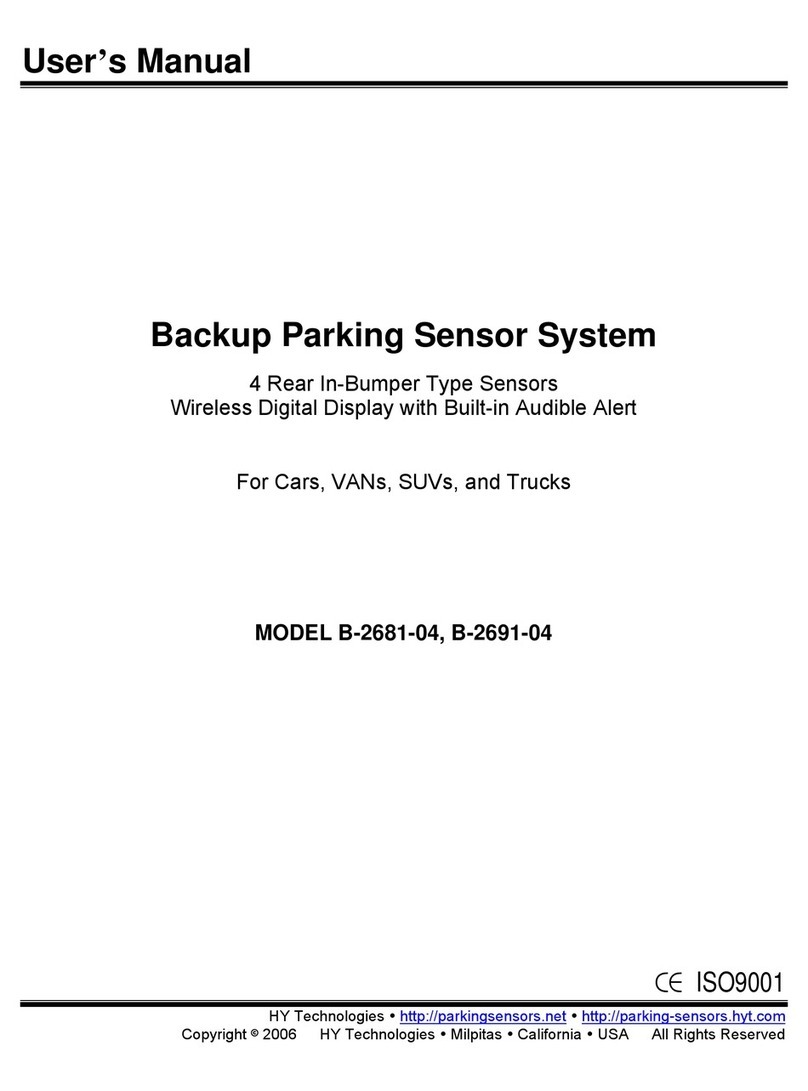
HY Technologies
HY Technologies B-2681-04 user manual
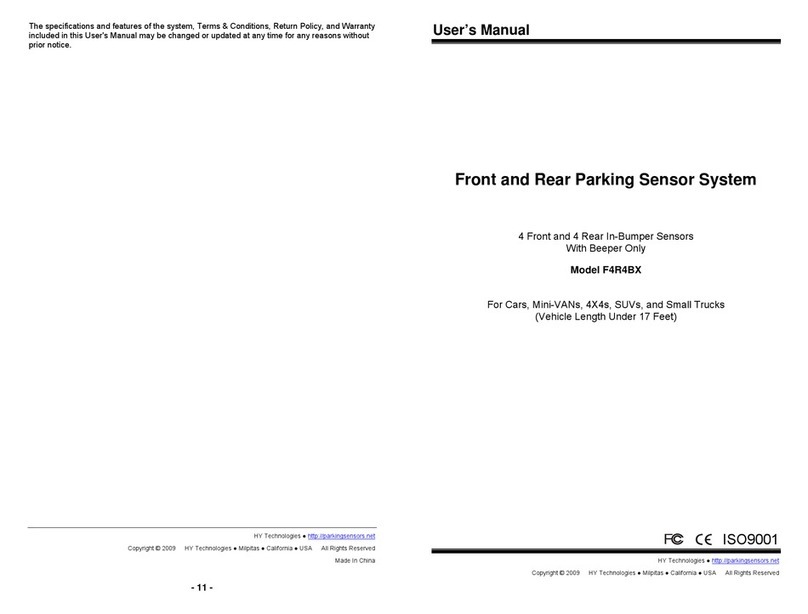
HY Technologies
HY Technologies F4R4BX user manual
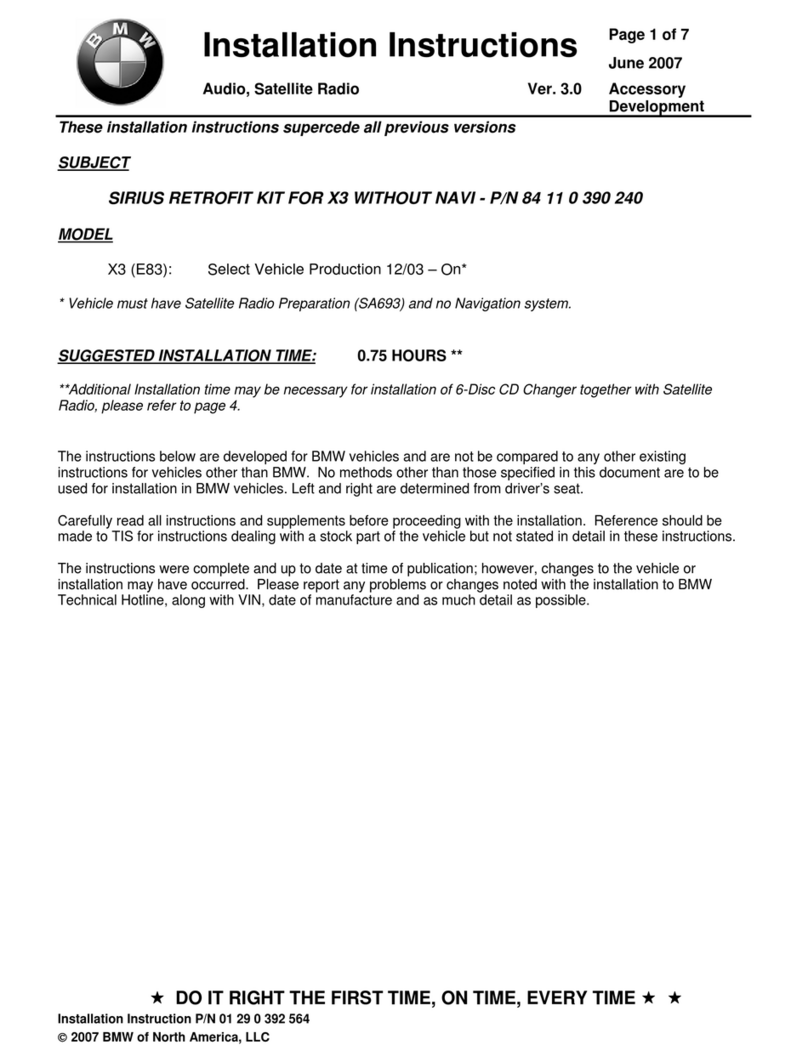
Sirius Satellite Radio
Sirius Satellite Radio RETROFIT KIT installation instructions
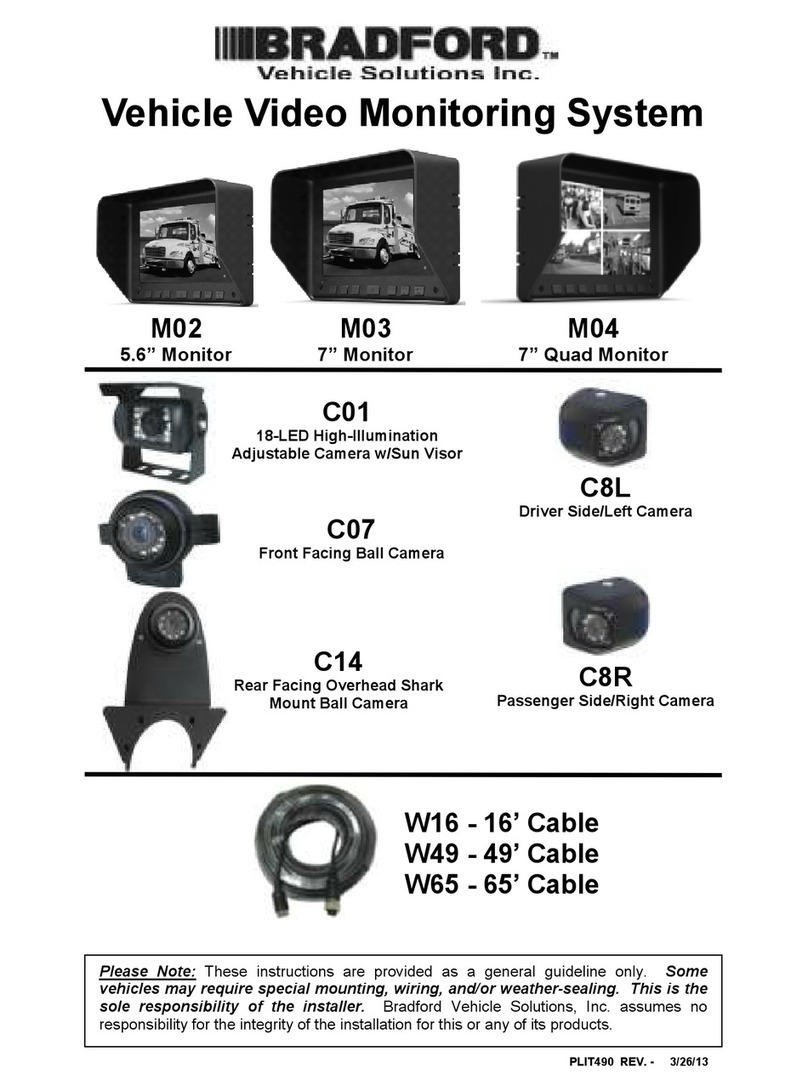
Bradford
Bradford Vehicle Video Monitoring System manual
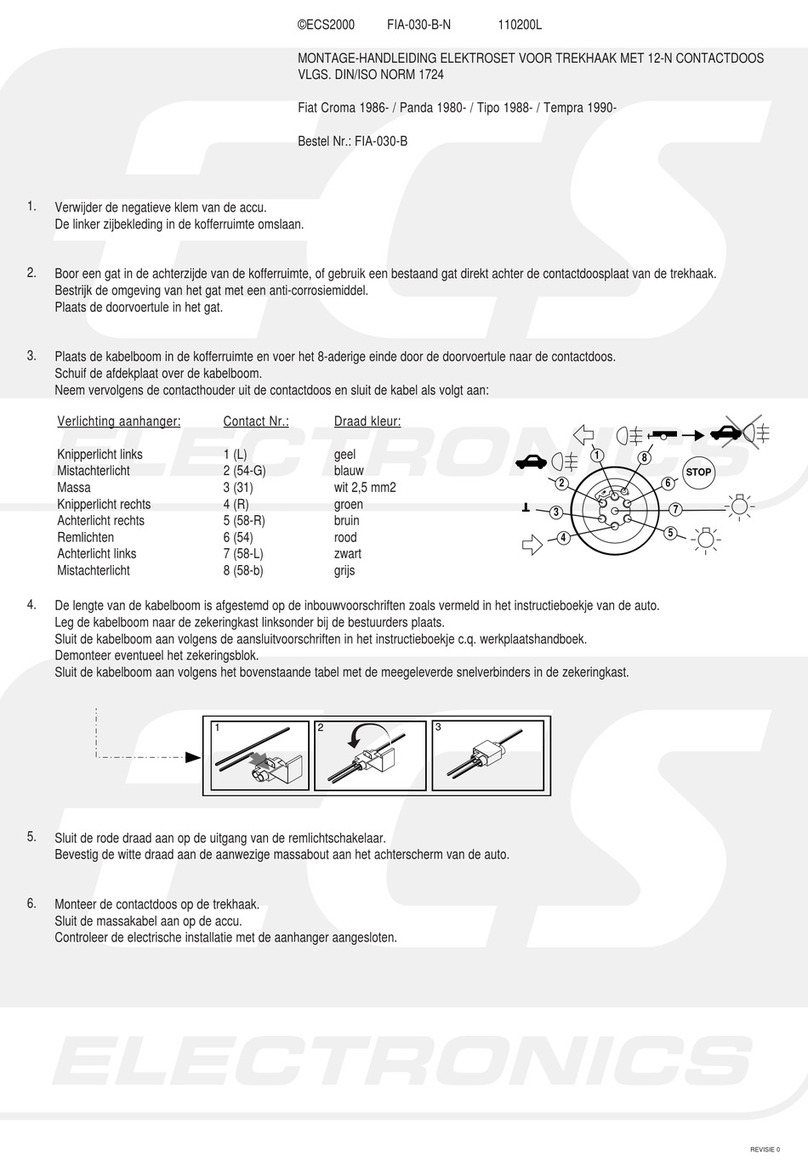
ECS
ECS FIA-030-B Fitting instructions

Hyundai
Hyundai H5699100 Universal Installation Manual

